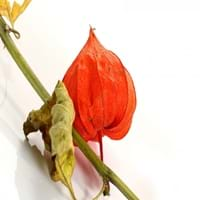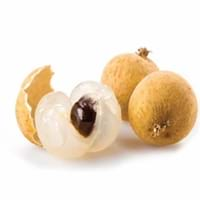Health Benefits
Anti-oxidant properties, Anti-inflammatory properties, Cancer prevention, Maintains healthy cholesterol level, Reduces blood circulation problems, Treatment of cough, fever & sore throat, Treatment of Hypertension
Anti depressant, Anti-inflammatory properties, Healthy mucus membrane, prevents oral cavity cancer, Prevents anemia, Prevents cases of morning sickness, Prevents lung cancer, Skin rejuvenation, Treatment of colonic diseases
General Benefits
Treatment of asthma, Treatment of cataract, Treatment of hepatitis, Treatment of macular degeneration, Treatment of neurodegenerative diseases
Anti oxidant properties, Anti-inflammatory properties, Digestive aid, Gives you energy, Suppresses Arthritis
Skin Benefits
Treatment of Rheumatism & Dermatitis, Treatment of Skin Inflammation
Reduces wrinkles, Skin rejuvenation
Hair Benefits
Unknown
Not Available
Allergy Symptoms
NA
Itching, Swelling of mouth, tongue or lips, Tingling sensation in mouth
Side Effects
Hypertension, Ventricular Tachycardia
Mouth irritation, Weight gain
Best Time to Eat
As a snack in the late afternoon, Eat the fresh ones, avoid mixing with any other foods, don't eat after meal., Morning time (before lunch), Strictly avoid empty stomach
As a snack in the late afternoon
Vitamin B5 (Pantothenic Acid)
Not Available
Vitamin B6 (Pyridoxin)
Not Available
Vitamin B9 (Folic acid)
Not Available
Vitamin C (Ascorbic Acid)
Vitamin E (Tocopherole)
Not Available
Water Content
Not Available
Calories in Fresh Fruit with Peel
Calories in Fresh Fruit without Peel
Not Available
Not Available
Calories in Frozen Form
Not Available
Not Available
Calories in Dried Form
Not Available
Not Available
Calories in Canned Form
Not Available
Not Available
Calories in Jam
Not Available
Type
Fruit vegetable
Tree fruit, Tropical
Season
Spring, Summer
Mid to late summer
Varieties
Physalis franchetii, Physalis pruinosa, Physalis peruviana, Physalis heterophylla and Physalis philadelphica
Chompoo Longan, Kohala Seedling, Haew, Edau and Biew Kiew
Seedless Variety
No
Not Available
Color
Bright Yellow, Orange
Rusty brown
Inside Color
Orange
Yellowish brown
Origin
Chile, Peru
Mexico
Soil Type
NA
Well-drained
Climatic Conditions
NA
Sunny, Warm, Without frosts
Facts about
NA
- Longan is also called as "Dragon's eye" in China as it gives an impression of an eyeball.
- Longan seeds can be used to absorb the venom after the snake bite and they also help to stop bleeding.
Other Countries
NA
Australia, Combodia, Taiwan, United States of America, Vietnam
Top Importer
Netherlands
China
Top Exporter
Colombia
Thailand
Botanical Name
Physalis Peruviana
Dimocarpus longan
Synonym
Alkekengi, Herschellia & Pentaphitrum
Dragon eye
Subkingdom
Tracheobionta
Viridiplantae
Division
Magnoliophyta
Tracheophyta
Class
Magnoliopsida
Magnoliopsida
Subclass
Asteridae
Rosidae
Order
Solanales
Sapindales
Family
Solanaceae
Sapindaceae
Genus
Physalis
Dimocarpus
Species
Physalis
D. longan
Generic Group
Not Available
Not Available
Difference Between Physalis and Longan
We might think that Physalis and Longan are similar with respect to nutritional value and health benefits. But the nutrient content of both fruits is different. Physalis and Longan Facts such as their taste, shape, color, and size are also distinct. The difference between Physalis and Longan is explained here.
The amount of calories in 100 gm of fresh Physalis and Longan with peel is 77.00 kcal and 83.00 kcal and the amount of calories without peel is Not Available and Not Available respectively. Thus, Physalis and Longan belong to High Calorie Fruits and Low Calorie Fruits category.These fruits might or might not differ with respect to their scientific classification. The order of Physalis and Longan is Solanales and Sapindales respectively. Physalis belongs to Solanaceae family and Longan belongs to Sapindaceae family. Physalis belongs to Physalis genus of Physalis species and Longan belongs to Dimocarpus genus of D. longan species. Beings plants, both fruits belong to Plantae Kingdom.









